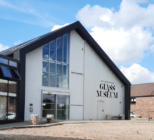The Places of Science scheme aims to highlight the science embedded in every aspect of culture, encouraging museums to think creatively about the science in their collections and most of all, their locality.
It replaces the Royal Society’s previous funding scheme for museums, Local Heroes, which saw museums taking part from Orkney to Plymouth. The Local Heroes scheme originally launched in 2010 and also ran in 2016, where 15 museums were chosen for grants including the McLean Museum and Art Gallery, Greenock, which celebrated James Watt.
Places of Science is intended to build on the success of the Local Heroes scheme and aims to encourage museums to produce even bolder and more creative projects to engage their communities with science.
“The Royal Society Places of Science scheme is a fantastic, nation-wide exploration of the scientific stories embedded in communities right across the UK,” said Professor Jonathan Ashmore FMedSci FRS, a neuroscientist at UCL and chair of the Places of Science allocation panel. “The UK’s rich and diverse scientific landscape provides the perfect backdrop for local celebrations of the science on our doorsteps.”
Prof Ashmore also said that science drives local economies and is an important source of history, identity and cultural heritage, which is why it is so important for science to be recognised through schemes such as Places of Science. “This new scheme builds on our previous commitment to funding small museums and will encourage them to run creative activities that will be valued and championed by local people.”
Sharon Heal, Director of the Museums Association and member of the Places of Science allocation panel said funding streams such as this allow small museums to explore new creative projects and engage with their local communities through inspiring science events and are crucial to their survival.
Places of Science will run every two years and applications for the 2018 scheme will open on Monday 13 August 2018.
Museums interested in applying are encouraged to register their interest at on the Royal Society website beforehand.










